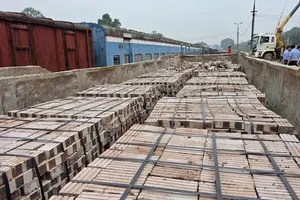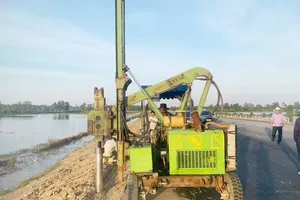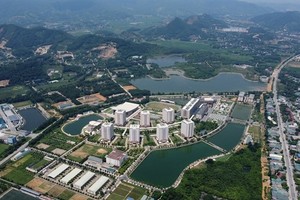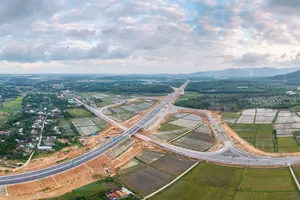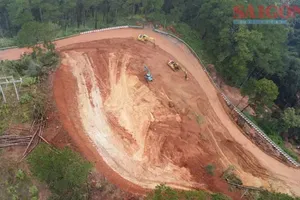The southernmost tip province of Ca Mau will lie under seawater in the next few decades if action is not taken to curb indiscriminate exploitation of underground water which is causing land depressions in the Mekong Delta, said Dr. Kjell Karlsrud from the Norwegian Geotechnical Institute.
Excessive exploitation
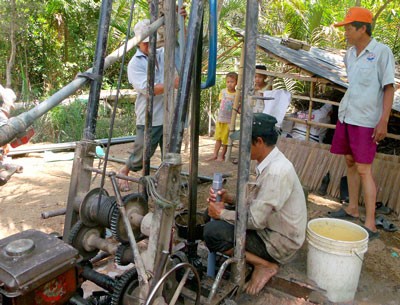
Can Tho City exploits 700,000 cubic meters of underground water a day from 32,400 drilled wells. Of these, more than 30 wells have a supply capacity of 500-1,000 cubic meters a day for seafood processing plants.
Soc Trang Province has at least 80,000 drilled wells of households and 130 water supply stations which exploit 200,000 cubic meters of water a day.
The provincial Department of Natural Resources and Environment said that underground water level has dropped the most in My Xuyen, Tran De and Vinh Chau Districts and in Soc Trang City.
My Xuyen District and Soc Trang City are extracting 20 percent more than permissible limits.
Salt water has penetrated into the underground water at a depth of 40-120m in several coastal areas of the Mekong Delta. This has forced local people to drill deeper wells to extract fresh water for daily use and irrigation.
All urban areas in Ca Mau, Bac Lieu, Soc Trang and Tra Vinh Provinces are mainly consuming underground water.
The underground water volume consumed everyday in the Mekong Delta is estimated at more than 1.5 million cubic meters. Tens of thousands of wells are now contaminated with saltwater and pose a high threat to further salt penetration in underground water.
Most provinces in the Mekong Delta have no plans to protect underground water in a sustainable way.
Urgent measures needed
The Ministry of Agriculture and Rural Development recently worked with the Norwegian Geotechnical Institute to announce results in the first phase of a project to study depressions in Ca Mau Peninsular.
Results of the study show that the underground water level lowered by 10-12m and the land sank by 30-80cm in Ca Mau Province during the period 1998-2013.
Land depression is said to increase to 90-150cm in the next 25 years and 120-210cm in the next 50 years. The province has lost 100m-1.4km of land in the last 20 years from landslides and erosion along coastal areas.
Ca Mau Province now has nearly 110,000 wells with total exploitation capacity of 373,000 cubic meters a day, resulting in an average depression of 1.9-2.8cm annually.
According to Dr. Vo Thanh Danh, from Can Tho University, if relevant sides do not take up measures to better manage underground water, this will not be available for use in coming years and take millions of years to recover.
Can Tho City authorities should not license new processing plants at Tra Noc 1 and 2 Industrial Zones any more because the Can Tho Water Plant cannot supply enough water for them.
Scientists believe that Cau Mau Province should build a scheme to completely stop exploitation of underground water and seek alternate sources. The best choice is canals and rivers but this requires a huge capital investment for treatment.
However, Ca Mau has no choice if the entire province is to be protected from disappearing into the sea in future, said Dr. Kjell Karlsrud.
The province is stepping up supply of tap water to rural areas, to limit use of underground water. They are also trying to treat salt penetration in wells.
Nguyen Truong Tien, Chairman of the Vietnamese Society for Soil Mechanics and Geotechnical Engineering, proposed use of technology to accumulate rainwater under the ground, which will help raise underground water level and prevent land depressions.




